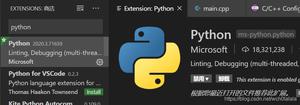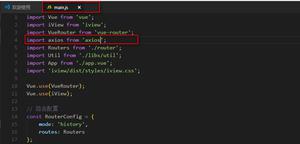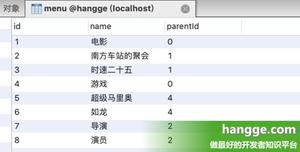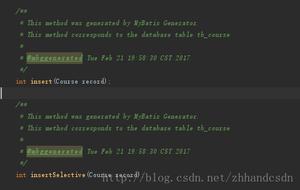Mybatis之Mapper接口如何执行SQL

前言
在众多的ORM框架中,Mybatis现在越来越多的被互联网公司所使用;主要原因还是因为Mybatis使用简单,操作灵活;本系列准备通过提问的方式来从源码层来更加深入的了解Mybatis。
提问
我们最常用的使用Mybatis的方式是获取一个Mapper接口对象,然后通过接口的方法名映射到配置文件中的statement;大致的代码格式如下所示:
public class BlogMain { public static void main(String[] args) throws IOException {
String resource = "mybatis-config-sourceCode.xml";
InputStream inputStream = Resources.getResourceAsStream(resource);
SqlSessionFactory sqlSessionFactory = new SqlSessionFactoryBuilder().build(inputStream);
SqlSession session = sqlSessionFactory.openSession();
try {
BlogMapper mapper = session.getMapper(BlogMapper.class);
// 常规方法
System.out.println(mapper.selectBlog(101));
// Object的方法
System.out.println(mapper.hashCode());
// public default方法
System.out.println(mapper.defaultValue());
// 父接口中的方法
System.out.println(mapper.selectParent(101));
} finally {
session.close();
}
}
以上除了使用常规的接口方法selectBlog,还使用了类型完全不同的方法分别是:Object内部方法,接口的默认方法,以及父类中的方法,当然Mybatis都能很好的处理,那我们每次调用的接口的方法时,Mybatis是如何帮我们执行sql的;接下来将进行分析,同时一并看一下是如何处理这些特殊方法的。
猜测
通过使用动态代理,生成一个代理类,然后通过Mapper里面的方法名称和配置文件中的statement名称做映射,然后根据statement类型分别执行sql。
分析
首先分析getMapper操作,然后再分析执行Mapper中的相关方法是如何调用相关sql的;
1.执行getMapper分析
如上代码中使用openSession创建的一个DefaultSqlSession类,此类中包含了执行了sql的增删改查等操作,另外还包含了getMapper方法:
private final Configuration configuration; @Override
public <T> T getMapper(Class<T> type) {
return configuration.<T>getMapper(type, this);
}
此处的Configuration是关键,也是Mybatis的一个核心类,可以先简单理解为就是我们的配置文件mybatis-config.xml的一个映射类;继续往下走:
protected final MapperRegistry mapperRegistry = new MapperRegistry(this); public <T> T getMapper(Class<T> type, SqlSession sqlSession) {
return mapperRegistry.getMapper(type, sqlSession);
}
这里引出了MapperRegistry,所有的Mapper都在此类中注册,通过key-value的形式存放,key对应xx.xx.xxMapper,而value存放的是Mapper的代理类,具体如类MapperRegistry代码所示:
private final Map<Class<?>, MapperProxyFactory<?>> knownMappers = new HashMap<Class<?>, MapperProxyFactory<?>>(); public <T> T getMapper(Class<T> type, SqlSession sqlSession) {
final MapperProxyFactory<T> mapperProxyFactory = (MapperProxyFactory<T>) knownMappers.get(type);
if (mapperProxyFactory == null) {
throw new BindingException("Type " + type + " is not known to the MapperRegistry.");
}
try {
return mapperProxyFactory.newInstance(sqlSession);
} catch (Exception e) {
throw new BindingException("Error getting mapper instance. Cause: " + e, e);
}
}
可以看到每次getMapper的时候其实都是去knownMappers获取一个MapperProxyFactory类,至于是何时往knownMappers中添加数据的,是在解析mybatis-config.xml配置文件的时候,解析到mappers标签的时候,如下所示:
<mappers> <mapper resource="mapper/BlogMapper.xml" />
</mappers>
继续解析里面的BlogMapper.xml,会把BlogMapper.xml中的namespace作为key,如下所示:
<mapper namespace="com.mybatis.mapper.BlogMapper"> <select id="selectBlog" parameterType="long" resultType="blog">
select * from blog where id = #{id}
</select>
</mapper>
namespace是必填的,此值作为MapperRegistry中的knownMappers的key,而value就是此Mapper类的一个代理工厂类MapperProxyFactory,每次调用getMapper的时候都会newInstance一个实例,代码如下:
private final Map<Method, MapperMethod> methodCache = new ConcurrentHashMap<Method, MapperMethod>(); @SuppressWarnings("unchecked")
protected T newInstance(MapperProxy<T> mapperProxy) {
return (T) Proxy.newProxyInstance(mapperInterface.getClassLoader(), new Class[] { mapperInterface }, mapperProxy);
}
public T newInstance(SqlSession sqlSession) {
final MapperProxy<T> mapperProxy = new MapperProxy<T>(sqlSession, mapperInterface, methodCache);
return newInstance(mapperProxy);
}
可以发现通过jdk自带的代理类Proxy.newProxyInstance(...)创建了一个代理类,设置MapperProxy作为InvocationHandler,在实例化MapperProxy时同时传入了一个methodCache对象,此对象是一个Map,存放的就是每个Mapper里面的方法,这里定义为MapperMethod;至此我们了解了getMapper的大致流程,下面继续看执行方法;
2.执行方法
由上分析可知,通过getMapper返回的是Mapper的一个动态代理类,并且指定了MapperProxy作为InvocationHandler,所以我们每次调用方法时其实调用了MapperProxy中的invoke方法:
public Object invoke(Object proxy, Method method, Object[] args) throws Throwable { try {
if (Object.class.equals(method.getDeclaringClass())) {
return method.invoke(this, args);
} else if (isDefaultMethod(method)) {
return invokeDefaultMethod(proxy, method, args);
}
} catch (Throwable t) {
throw ExceptionUtil.unwrapThrowable(t);
}
final MapperMethod mapperMethod = cachedMapperMethod(method);
return mapperMethod.execute(sqlSession, args);
}
private MapperMethod cachedMapperMethod(Method method) {
MapperMethod mapperMethod = methodCache.get(method);
if (mapperMethod == null) {
mapperMethod = new MapperMethod(mapperInterface, method, sqlSession.getConfiguration());
methodCache.put(method, mapperMethod);
}
return mapperMethod;
}
以上有两个判断分别是:是否是Object类中的方法,以及是否是默认方法;这两种情况也是我在上面实例中展示的原因,是不需要映射xxMapper.xml中的statement的,可以直接执行返回结果;接下来就是非这两种情况的处理,这里使用的缓存做优化,也就是说我如果连续调用同一个Mapper下面同一个方法多次,不会创建多个MapperMethod;为什么需要缓存,主要是因为每次实例化MapperMethod需要初始化很多东西,如下所示:
public MapperMethod(Class<?> mapperInterface, Method method, Configuration config) { this.command = new SqlCommand(config, mapperInterface, method);
this.method = new MethodSignature(config, mapperInterface, method);
}
主要是SqlCommand和MethodSignature这两个实例,这两个类大致意思是:SqlCommand保存了方法是何种操作类型包括增删改查,未知,刷新以及对应的xxMapper.xml中的statement的ID;MethodSignature保存了方法的签名包括返回类型等;此处我们大致了解一下就行,后面的文章会继续进行详细介绍;有了上面初始化好的这些参数就可以执行调用MapperMethod的execute方法了:
public Object execute(SqlSession sqlSession, Object[] args) { Object result;
switch (command.getType()) {
case INSERT: {
Object param = method.convertArgsToSqlCommandParam(args);
result = rowCountResult(sqlSession.insert(command.getName(), param));
break;
}
case UPDATE: {
Object param = method.convertArgsToSqlCommandParam(args);
result = rowCountResult(sqlSession.update(command.getName(), param));
break;
}
case DELETE: {
Object param = method.convertArgsToSqlCommandParam(args);
result = rowCountResult(sqlSession.delete(command.getName(), param));
break;
}
case SELECT:
if (method.returnsVoid() && method.hasResultHandler()) {
executeWithResultHandler(sqlSession, args);
result = null;
} else if (method.returnsMany()) {
result = executeForMany(sqlSession, args);
} else if (method.returnsMap()) {
result = executeForMap(sqlSession, args);
} else if (method.returnsCursor()) {
result = executeForCursor(sqlSession, args);
} else {
Object param = method.convertArgsToSqlCommandParam(args);
result = sqlSession.selectOne(command.getName(), param);
}
break;
case FLUSH:
result = sqlSession.flushStatements();
break;
default:
throw new BindingException("Unknown execution method for: " + command.getName());
}
if (result == null && method.getReturnType().isPrimitive() && !method.returnsVoid()) {
throw new BindingException("Mapper method "" + command.getName()
+ " attempted to return null from a method with a primitive return type (" + method.getReturnType() + ").");
}
return result;
}
根据SqlCommand的命令类型分别执行不同的sql;执行时还需要对参数进行处理,执行完之后还需要对结果集进行处理,当然还有缓存结果集的处理;此处我们大致了解一下就行,后面每个点会单独进行提问介绍;好了执行完之后就可以返回结果了;
总结
本文大致了解到通过getMapper获取了一个xxMapper接口的动态代理类,并且每次get操作都会获取一个新的对象,Mybatis并没有对此类进行缓存,而是对xxMapper接口中的每个方法(MapperMethod)进行缓存,这里的缓存方法是被每个动态代理类对象所共享的,没有对代理类进行缓存主要是因为每个类可以有自己的sqlSession;另外一点是Mybatis处理了是否是Object类中的方法,以及是否是默认方法两种特殊的方法;最后根据方法名称映射的statement执行相关的sql。
示例代码地址
Github
以上是 Mybatis之Mapper接口如何执行SQL 的全部内容, 来源链接: utcz.com/z/510555.html









